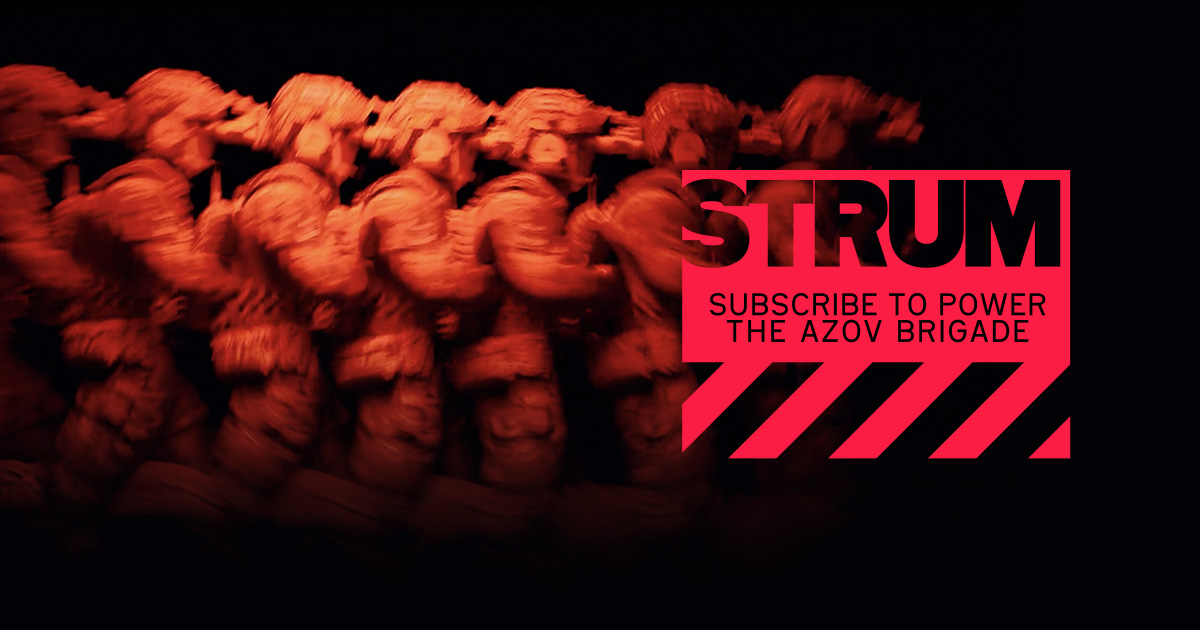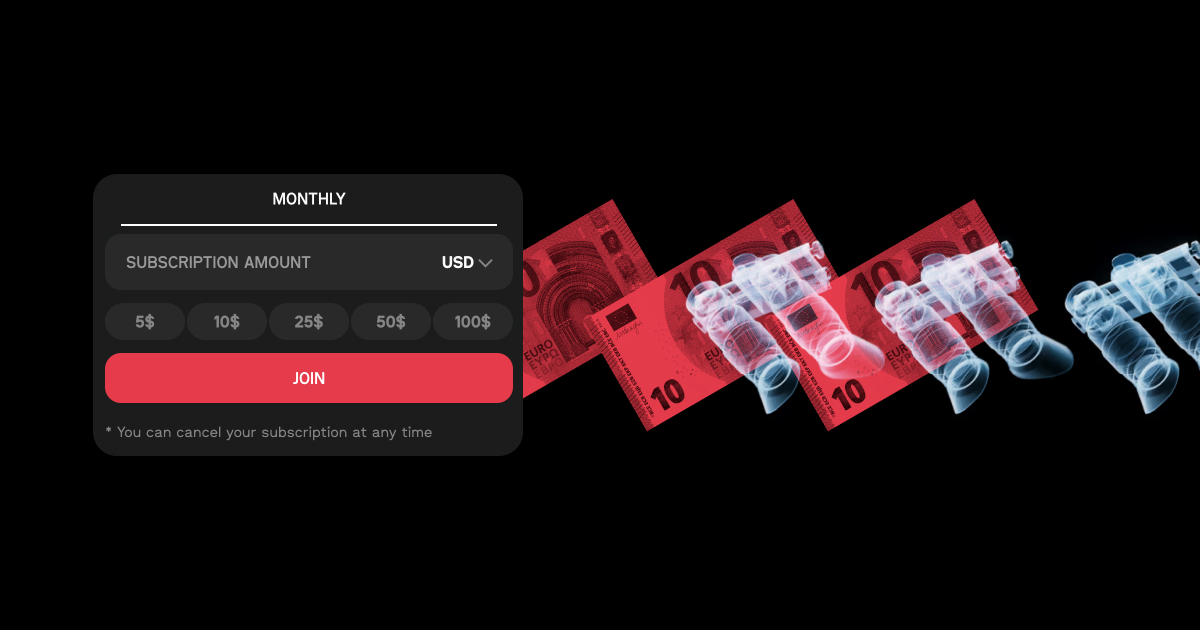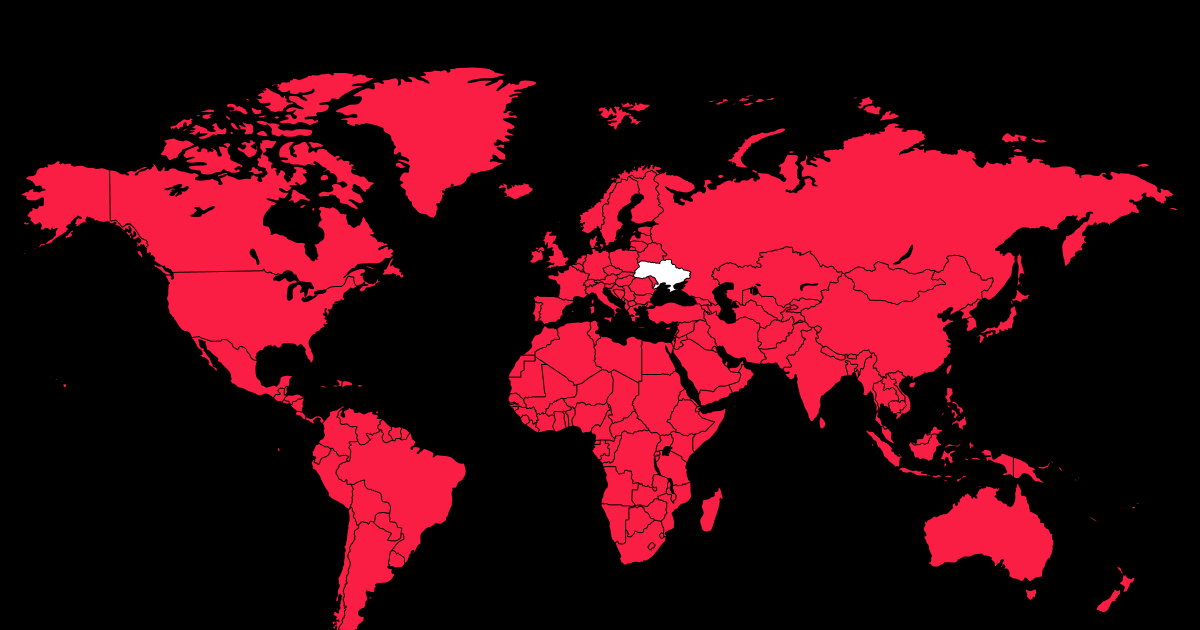The Power that Fuels Azov. What is Strum, and how does it support the brigade financially?

On October 14, Azov.One officially announced the launch of the Strum (Ukr. Струм — "electric current") platform. The idea has been in development for more than a year. The project initiators explain that Strum is a subscription service for monthly support of the brigade. We all know the footage of the Azov Brigade's effective work from the frontline. Now, everyone can thank them in a format similar to subscriptions to TV shows and movies on Netflix, Disney+, or HBO Max.
Svidomi explains what this initiative is and how you can regularly support Azov through the Strum subscription.
How does the Strum project work?
Strum is a portal where you can subscribe to make regular donations to the 12th Azov Brigade of the National Guard. The subscription allows users to set and adjust monthly contributions for the brigade's immediate needs: vehicles, drones, fuel, tires, and other supplies crucial on the battlefield. Meeting needs through individual campaigns has become too slow. Weeks or even months can pass between the time a request is made and the time it arrives at the front lines, and the situation and needs can change drastically.
Strum wants to solve this problem. Like IT companies, Azov plans to create a steady flow of donations, creating a kind of "financial cushion" for the most unstable times. This will also allow citizens to plan their monthly donation budgets, creating a more stable system without relying on urgent campaigns and widespread calls for help.

"Every month, it gets harder to raise money through small campaigns. We have to come up with something new all the time. At a certain point, the time and effort spent on creativity became overwhelming. When soldiers ask for drones, they need them yesterday. That's how the idea of a brigade subscription came about. The idea was to raise money systematically without being tied to a specific need or campaign. The subscription will allow the brigade to plan its work and purchases in advance," says project manager Dmytro Horshkov, the initiator of the idea.
Project initiators say that donations usually peak during attacks or negative events. Ukrainians channel their anger into support for the army, a strong expression of solidarity, but it is difficult to build long-term plans and strategies based on this. This is the second problem Strum aims to solve by smoothing out civilian donation trends and allowing soldiers to plan purchases weeks in advance.
What makes this project unique? How does the Strum subscription differ from monobank subscriptions?
The Azov subscription wants to stand out. For a long time, the brigade has felt the lack of many types of equipment and supplies for various reasons, so it needs a unique approach. The war has brought volunteerism to a new level. Fundraisers, foundations, and even military units are using high-quality design, communications, and marketing strategies to support the Army. Strum must build a distinctive brand to stand out. A good idea won't survive without a strong design and communications strategy that creates emotion.
"Military communication has begun to operate under the rules of marketing. Every unit is trying to create its own ideology and value. We're all working for a common victory, but there's competition between units for attention and recruits. We could create an "Azov Victory Subscription," but would it attract people? Probably not. People are emotional creatures and make impulsive decisions. We're creating a cool product that is an 'investment in victory,' but it needed a unique shape that would create a 'wow' effect," says Yaroslav Ohotskyi, creator of Strum's communication approaches.
"We use red in Strum's design to get immediate attention. On social media, it's a competition for just three seconds of someone's attention. With millions of fundraisers on social media, the subscription required visual creativity. Red is rarely used by other companies, funds, etc., so we chose it. The subscription also needed a well-communicated message. Many foundations have similar services, and the Brigade itself had something like a subscription, but it didn't attract many signups. We need to grab attention and then convey importance," says Mykyta Malyshev, lead designer on the project, explaining Strum's visual appeal.

Strum's identity is simple: Strum (Ukr. Струм — "electric current") powers Azov. Strum unites people into a system, creating a force. With each new subscription, people strengthen the Brigade's Strum, which is reflected in the program's referral system. By inviting friends, each donor can see the network grow and spread, a network of energy fighting the enemy.
"Social responsibility is key to this project, but we understand that users need incentives to donate. That's why we're working to ensure that long-term subscribers or those with extensive referral networks receive certain benefits. Expanding your network by inviting friends is great — you can see how much you've helped Azov. We're also planning additional rewards in the future, although we can't share specifics yet. Expanding this project is one of our goals," says Serhii Todosan, an Azov serviceman and project marketer.
In addition to communication, there are practical reasons for creating a separate subscription platform. The functionality of existing platforms is limited, while the Brigade needed a universal solution to reach the maximum audience. The Ukrainian "donation market" is significant but not unlimited. Strum operates through Stripe, a widely trusted Western platform, and aims to attract foreign support.
"Stripe is very trusted in the West. It's a billion-dollar company that's known around the world. When someone from France or America lands on the checkout page and sees the Stripe logo, it's a sign of trust," adds Dmytro Horshkov.
How Strum became the driving force behind Azov
Less than a month has passed since the launch of the subscription, and Strum plans to keep growing. The subscription will continue to expand with new features and strategies. The need for donations is constant, and support must continue to grow, the Strum team explains.

"I don't believe in 'enough.' Ideally, every soldier would have night vision, no matter their role, and the best accessories and weapons to give them an edge on the battlefield. But that's a distant dream. I don't know of any unit that has everything it needs. Even the United States, which spends more on its military than the next nine countries combined, isn't fully equipped. With the war in such an intense phase, we always need new initiatives and more donations to support our troops. When we reach a higher level of funding, we'll look at military vehicle purchases. Scaling up and promoting this is essential. There's still a lot of work ahead of us," Serhii adds.
"My message to those reading this: we're open to consultation and participation if you have experience in international communications and platform building. United24 has involved a lot of work by hundreds of people. Azov.One doesn't have that level of human resources yet, so we need your ideas and insights on how to reach a foreign audience," Yaroslav concludes.


